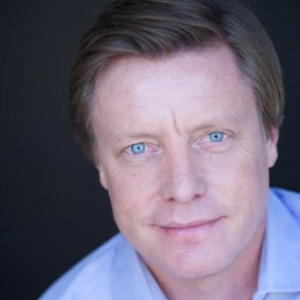 Pandora CFO Mike Herring answered questions in front of investors at the Oppenheimer 17th-annual Technology, Internet & Communications Conference on Wednesday. P stock rose over 10% during the day, probably due less to Herring’s remarks than to investment house Stifel issuing a Buy rating for Pandora.
Pandora CFO Mike Herring answered questions in front of investors at the Oppenheimer 17th-annual Technology, Internet & Communications Conference on Wednesday. P stock rose over 10% during the day, probably due less to Herring’s remarks than to investment house Stifel issuing a Buy rating for Pandora.
Meanwhile, Mike Herring delivered his talking points in response to 32 minutes of questioning. The first topic, picking up where analysts left off in Pandora’s recent earnings report, was slowing growth of active listeners, the key metric in judging Pandora’s audience size. That number is currently 76-million monthly users, which represents year-over-year growth but not much change in recent months. Mike Herring spoke about growing audience size consciously, and calibrating it with the cost of delivering increased hours of music — implying that Pandra has kept audience size stable intentionally.
“As we grow users, the hours will grow faster. We need to be conscious of doing that the right way. If users had been 5% higher in Q2, we would have had about $10-million of added content expense, and our EPS would have been below the low end of our range. It’s very much a calibration as a business. We take a long view. It’s about building the right loyal user base, and building it over time as we can monetize it. We build those two things together.”
“There are 240-million people in the U.S. who listen to terrestrial radio. As the benefits and ubiquity of Internet radio really kick in on a broad level — when cars get connected — a lot of that listening is going to shift.” –Mike Herring, Pandora CFO
Interestingly, Mike Herring broke out CPM ranges for different types of ad sales, with an emphasis on why local ad sales is such an important castegory for Pandora, justifying the company’s substantial investment in the past two years. Herring noted that in the eight big-city markets where Pandora has been operating the longest, sell-through of the three-minute hourly inventory approaches or reaches 100%. Sell-through is less in the newer markets.
Herring broke out three CPM levels:
- National network advertising: $4-6 CPM. Pandora has mostly left that business behind, according to Mike Herring: “It’s what you hear in iTunes Radio and Spotify’s free service.”
- National accounts buying selected markets: $6-9 CPM. “We do quite a lot of business in that space” — which requires more granular audience targeting.
- The local layer: $9-12 CPM. “That’s being in the local market with the local infrastructure to make the sale. Pandora is the only Internet radio company selling into that market. It requires micro-targeting.”
A question arose about music licensing and royalty costs, during this time when the U.S. government is reviewing its regulations. The cost of music is Pandora’s biggest expense.
“These rates are so high, they prevent entrants into the market. Most people get free music from piracy. Pandora is a 100%-legal way of delivering free music. We’re talking about a music industry that lost 60% of its revenue in the last 12 years. They [music labels] are clawing for dollars wherever they can get them. Pandora’s job is to convince them that we are part of the solution, not part of the problem.”
His forecast for the future cost of music licensing?
“We’re really good at this stuff. We’ve got the best economists and lawyers in the world. We feel good about it, but it’s a big unknown.”
